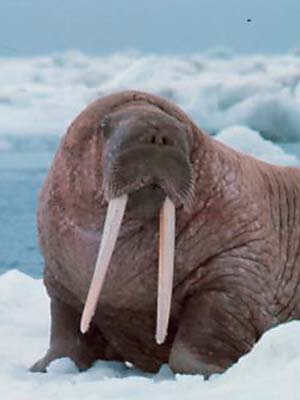Goo goo ga joob
Oil companies are supposed to have spill-response plans prepared before they begin drilling in American offshore waters. Minerals Management Service safety regulators are supposed to scrutinize those plans before signing off on them.  That’s all you can say about the gusher in the gulf because walruses are mentioned in BP's response plan for the area. And of course, this mess stopped making sense a long time ago.Thanks to Grist for offering the seven dumbest things in the BP oil spill response plan:
That’s all you can say about the gusher in the gulf because walruses are mentioned in BP's response plan for the area. And of course, this mess stopped making sense a long time ago.Thanks to Grist for offering the seven dumbest things in the BP oil spill response plan:
1. BP mentions sea lions, seals, sea otters, walruses in its Oil Spill Response Plan for the Gulf of Mexico region. The geniuses who wrote the plan either don't know jack about wildlife, or they cribbed text out of a plan for the Arctic region. 2. BP's "plan" offers a Japanese home shopping site as the link to one of its "primary equipment providers for BP in the Gulf of Mexico Region [for] rapid deployment of spill response resources on a 24 hour, 7 days a week basis." Apparently the site didn't have a 100-ton underwater containment dome in stock -- it took rescue workers days to build one in an early attempt to stop the leak ... which failed. 3. The "plan" included no information about tracking sub-surface oil plumes from deepwater blowouts, although more oil may be spreading below the surface than at the top. 4. The "plan" includes no oceanic or meteorological data, despite the ocean-floor site in a hurricane-prone region. 5. The "plan" directs BP media spokespeople to never make "promises that property, ecology, or anything else will be restored to normal." Sounds like weasely responsibility-dodging, although this may be more honest than the company intended. 6. The "plan" included no measures for preventing disease (viruses and bacteria) transmission to captured animals in rehab facilities. This was found to be a major risk after the Exxon Valdez spill, according to Public Employees for Environmental Responsibility (PEER), which analyzed the response plan and culled these absurd lapses in common sense. 7. The nearly 600 pages of the "plan" consist largely of lists, phone numbers and blank forms, according to PEER Board Member Rick Steiner, a marine professor and conservationist who tracked the Exxon Valdez spill. Read the full post HERE.
